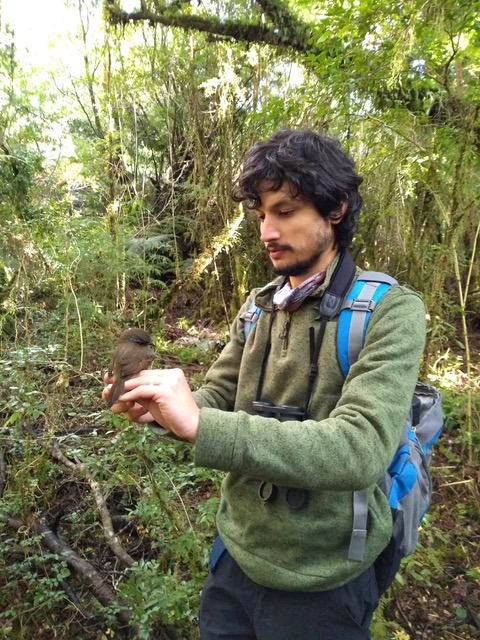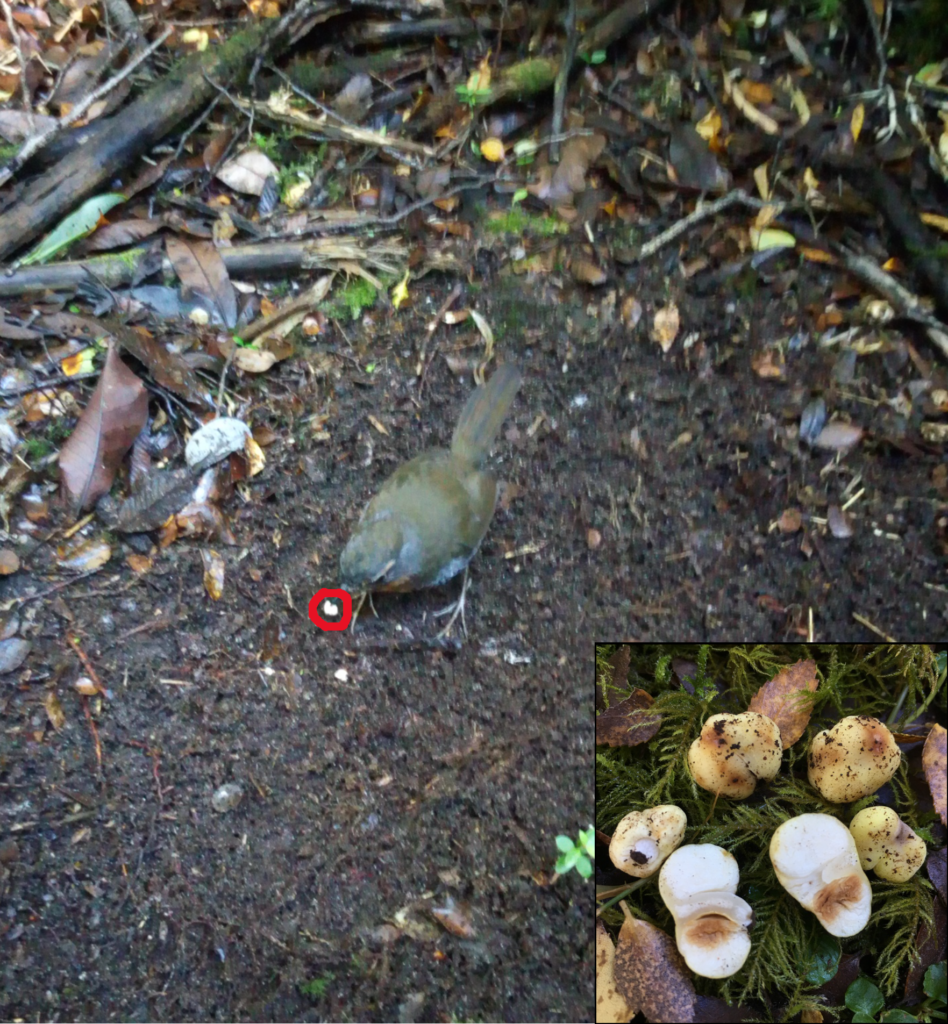This is the first in a series of posts that will run throughout 2020 profiling work done by recipients of last year’s Student & Postdoc Research Awards. View the full series here.
How does a fungal ecologist end up getting a grant from an ornithological society? For Marcos Vinicius Caiafa Sepulveda, the connection was truffles.
Truffles are common in the temperate rainforests of southern Chile, Marcos’s home country. However, Marcos is quick to explain that these aren’t the same as the truffles sought after by foodies. “Truffle” is a general term for any fungus whose spores remain enclosed in an underground fruiting body rather than being exposed in the gills of a mushroom. “The truffles that we hear about as a gourmet food are from the genus Tuber, which is a huge lineage in North America and Europe, but there are hundreds of other different truffles,” says Marcus. “Some of them are edible for humans, and some of them are not.”

Unlike mushrooms, whose spores are usually dispersed by the wind, truffles need help from animals that dig them up and eat them. This role is often filled by mammals such as pigs, deer, or squirrels, but Marcos had a hunch that in the truffle-filled forests of southern Chile, that might not be the whole story. Some of the truffles in that region don’t produce the sort of strong odors that would attract mammals, but their size, shape, and color are reminiscent of small fruits eaten by birds.
“There are two particular birds that are very noticeable,” says Marcos. “You go to the forest and you see them all the time; they’re scratching the soil, and they have very strong feet. We started wondering if these birds might eat truffles, and if they might have something to do with the truffle dispersal.”
Marcos, a PhD student in Matthew Smith’s lab at the University of Florida, received a Student Research Award from AOS in 2019 to explore the relationship between those two birds, the Chucao Tapaculo and Black-throated Huet-huet, and the truffles that share their ecosystem. Preliminary sampling in 2018 had provided the first evidence that these birds were indeed eating truffles, but with funding from AOS, Marcos made two additional trips to Chile in 2019 and collected 152 fecal samples from the two bird species.

As Marcos described in his interim report to AOS, he was able to confirm the presence of truffle DNA in the birds’ feces using “high-throughput” genetic sequencing techniques that make it possible to sequence large numbers of DNA molecules at one time. He also examined his samples the old-fashioned way — under a microscope — and found fungal spores, indicating that the birds were definitely aiding dispersal. His colleagues even caught a Chucao Tapaculo in the act, snapping a photo of it chowing down on a freshly unearthed truffle.
Truffles are part of a group of fungi called ectomycorrhizae that have a symbiotic relationship with trees, growing into their roots and helping them take in nitrogen and water in exchange for sugar. When the birds in Marcos’s study eat truffles and spread their spores, they’re getting more out of it than just a meal: they’re also boosting the health of the forest they call home.
Building on the data he collected with his funding from AOS, Marcos has secured a larger grant from the National Geographic Society to return to Chile this spring. “We already have evidence that shows that the birds are eating the truffles, but we want to set up some experiments to understand more about how they’re attracted to truffles, if they have a particular preference,” says Marcos. “Right now I’m working on designing those experiments.” One goal is to determine whether the birds are seeking out truffles or just eating them opportunistically while looking for fruit.
Marcos hopes to continue working on bird-fungal interactions after finishing his PhD. “It’s something that’s not very common. People don’t tend to think that birds would be interested in fungi,” says Marcos. “But it seems like they are.”
